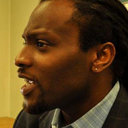

Prof. Zhonggen Yu
Beijing Language and Culture University, China
Research Area: Education/Linguistics
Speech Title: Bibliometrically and systematically analyzing automated writing evaluation for English learning
Abstract: This study combined bibliometric analysis and systematic review to explore the use of automated writing evaluation for learning English as a second language. VOSviewer was used to identify the highly discussed topics, the top ten cited authors, organizations, countries, references, and sources in the studies on automated writing evaluation. Fifty-six peer-reviewed articles were selected according to the Preferred Reporting Items for Systematic Review and Meta-analysis Protocols. The analysis revealed that automated writing evaluation is helpful, but its effectiveness varies according to the types of feedback, and it cannot replace the role of human feedback yet. Teachers’ roles are significant in integrating automated writing evaluation into the classroom.

Assoc. Prof. Paul C. Mocombe
West Virginia State University, USA
Research Area: Sociological Theory, Social Theory, Haitian studies, and Social and Political Philosophy
Speech Title: THE SOCIAL CLASS LANGUAGE GAME
Abstract: This work highlights the origins and nature of the social class language game in Mocombe’s theory of phenomenological structuralism. According to Mocombe, the human being is a product of their mental stance arising from conflict, or not, between four structuring structures: 1) praxis associated with the phenomenal properties, i.e., qualia, of subatomic particles; 2) the anatomy and physiology of the body; 3) structural reproduction and differentiation; and 4) actions driven by the deferment of meaning in ego-centered communicative discourse. It is the mental stance of human beings in relation to these four structuring structures, which determine their being and actions in the material world. The social class language game, associated with structural reproduction and differentiation, in this theory is constituted as five systems under the control of those who own the means and mode of production in a material resource framework, and is ultimately the determining factor of, and for, human actions in the material world.
Updating
